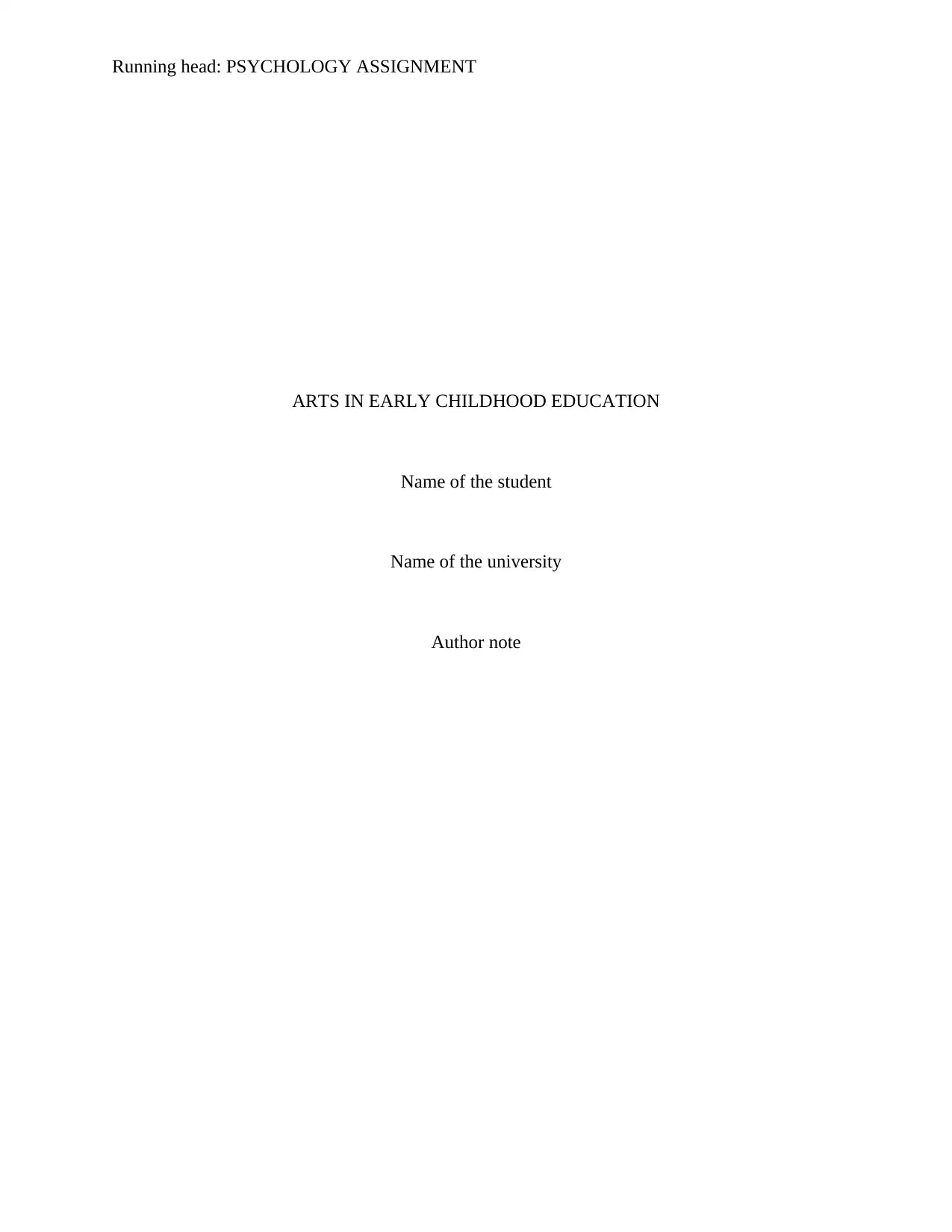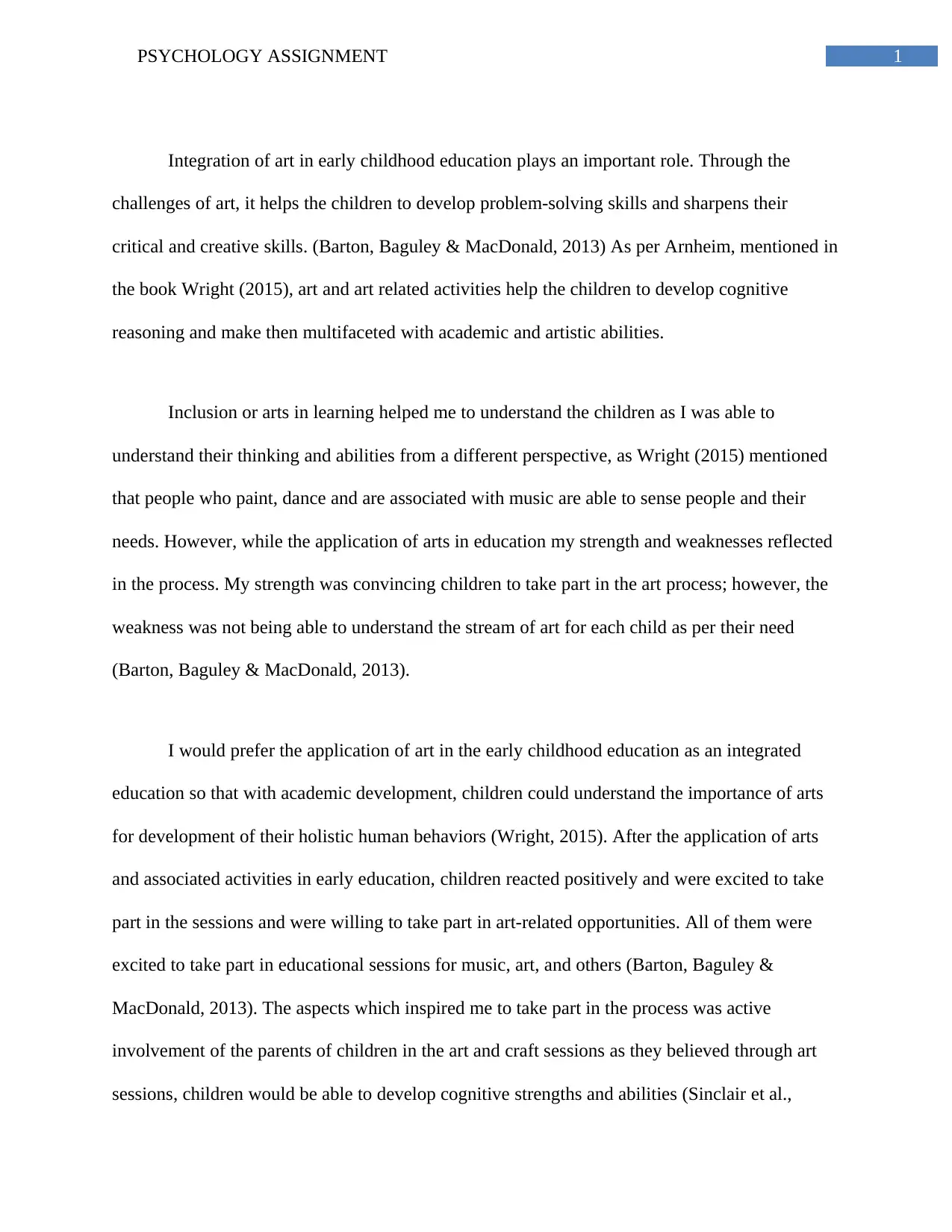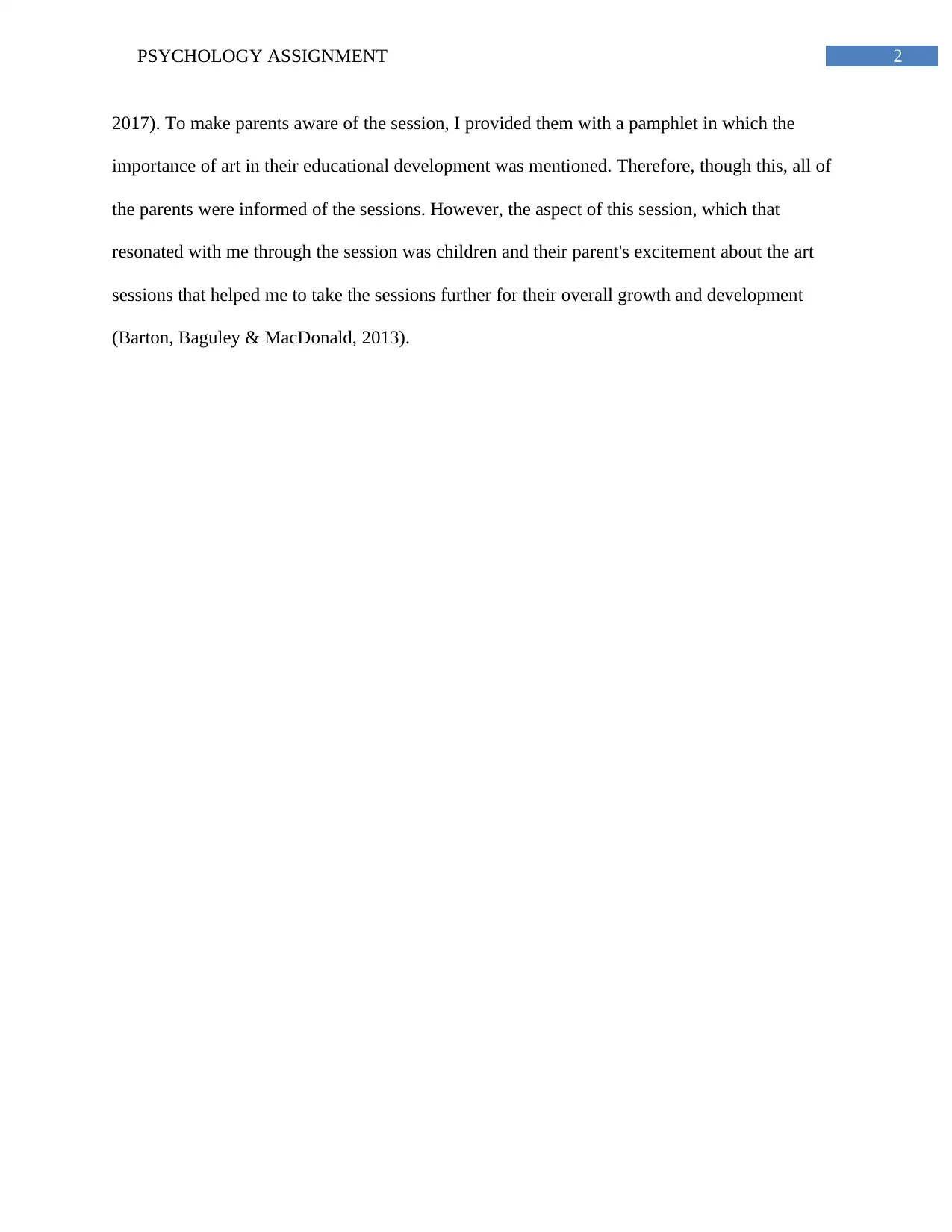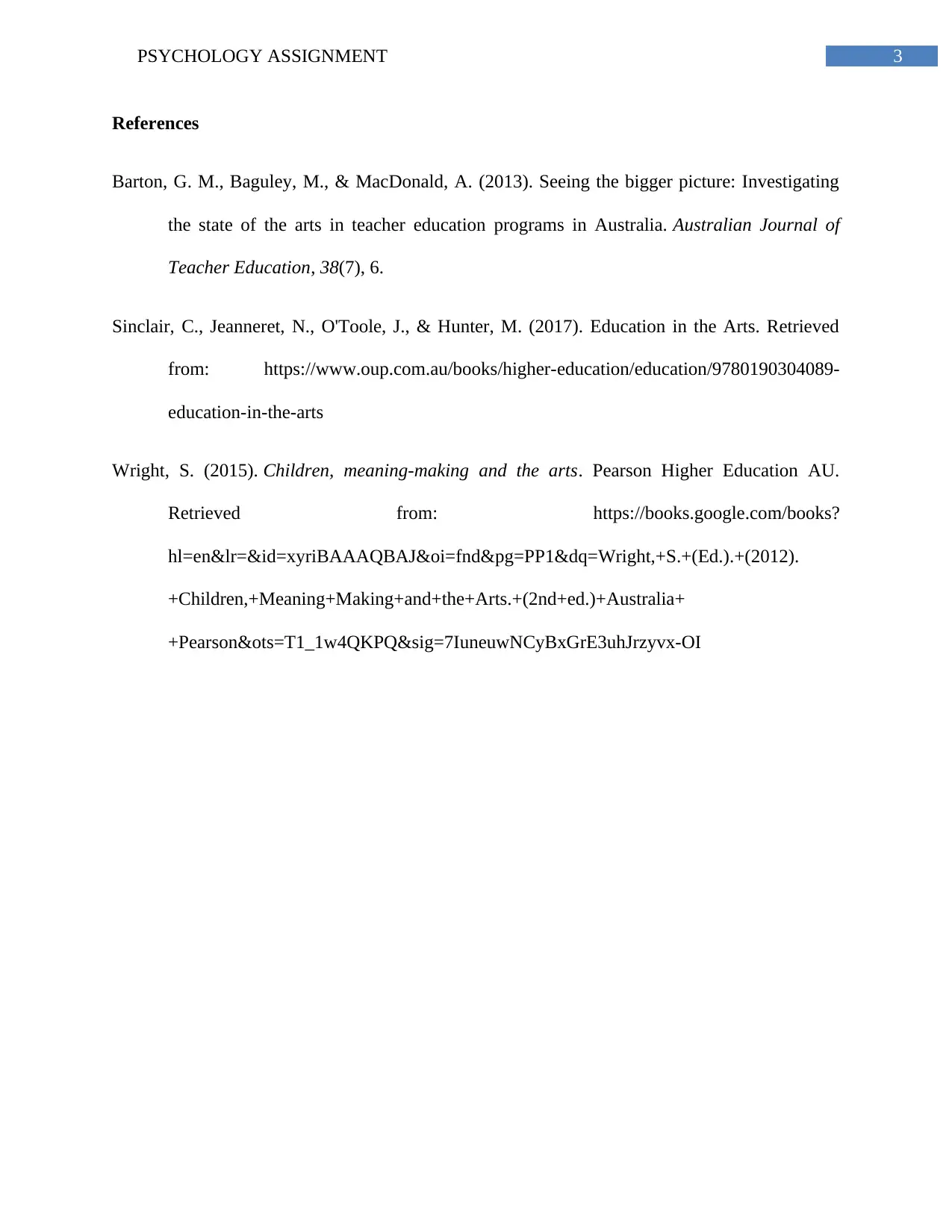Reflecting on Arts in Early Childhood Education: Experiences & Impact
VerifiedAdded on 2023/04/08
|4
|478
|267
Essay
AI Summary
This essay reflects on the integration of art in early childhood education, highlighting its importance in developing problem-solving, critical thinking, and creative skills in children. The author discusses how art activities helped in understanding children's thinking and abilities from a different perspective. The essay also touches upon the author's strengths and weaknesses in implementing art in education, emphasizing the preference for an integrated approach. Positive reactions from children and parents' active involvement in art sessions are noted as inspiring aspects. The essay concludes by referencing academic sources that support the role of arts in education and child development, emphasizing the importance of art for the development of holistic human behaviors.
1 out of 4






![[object Object]](/_next/static/media/star-bottom.7253800d.svg)